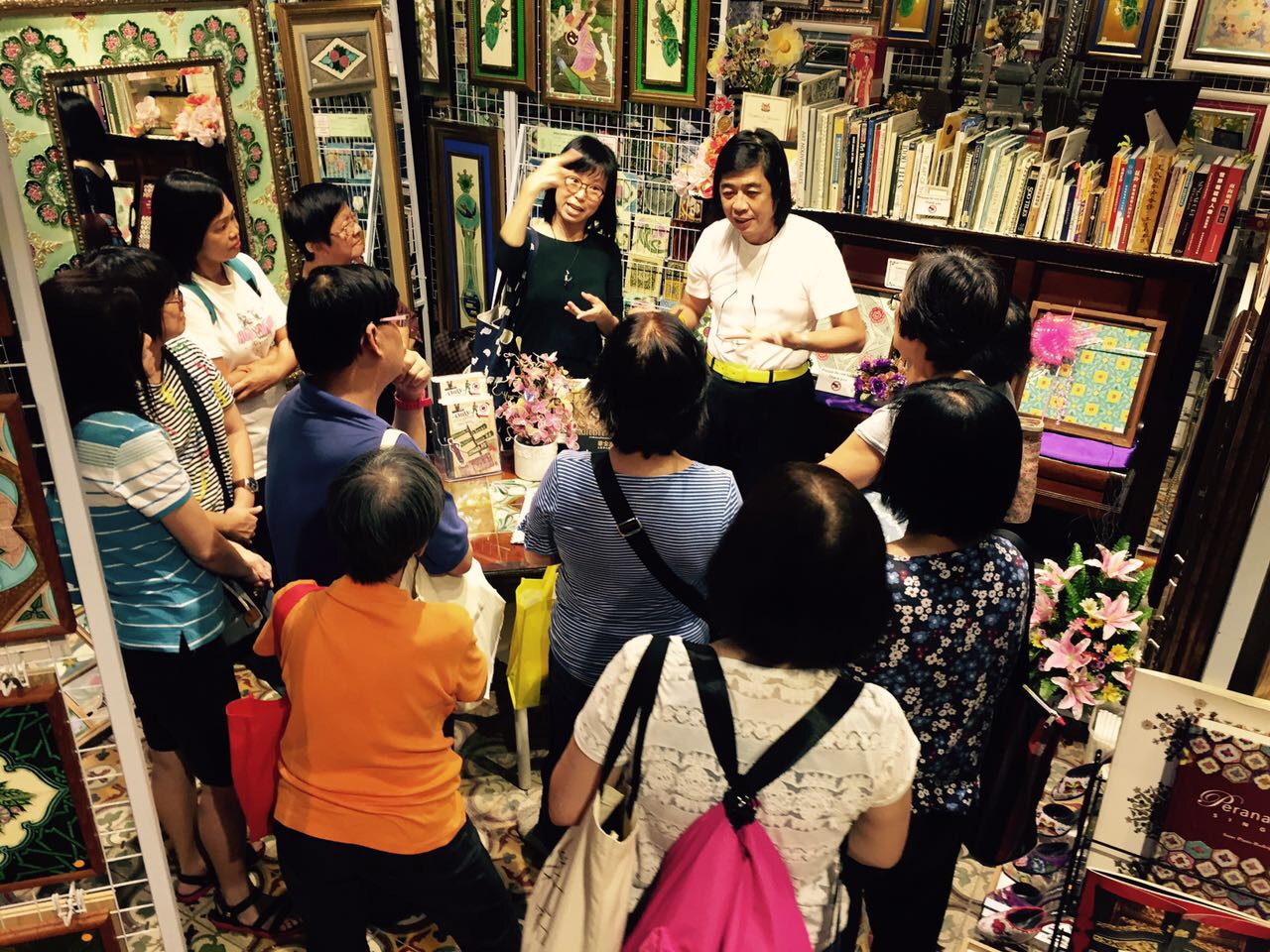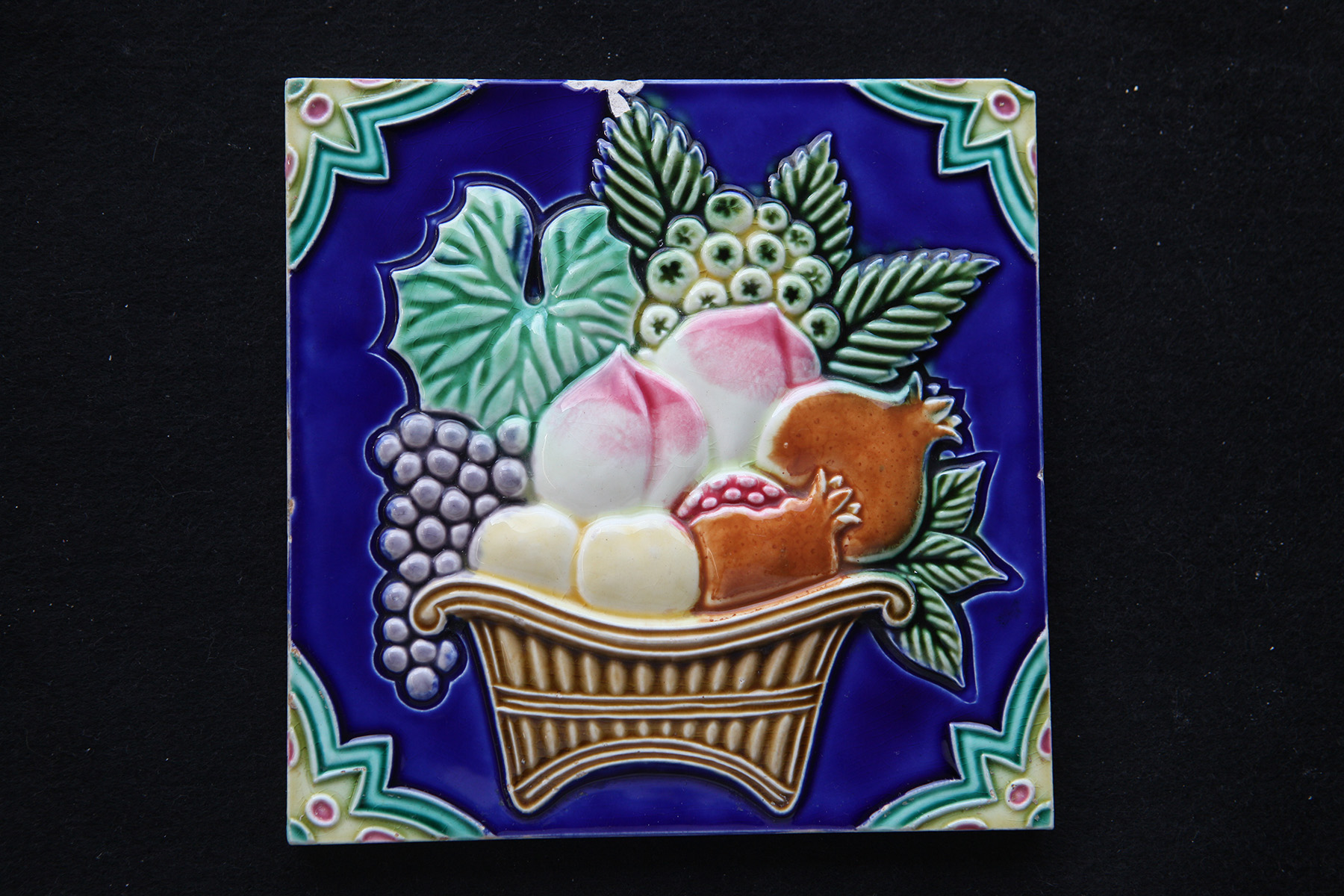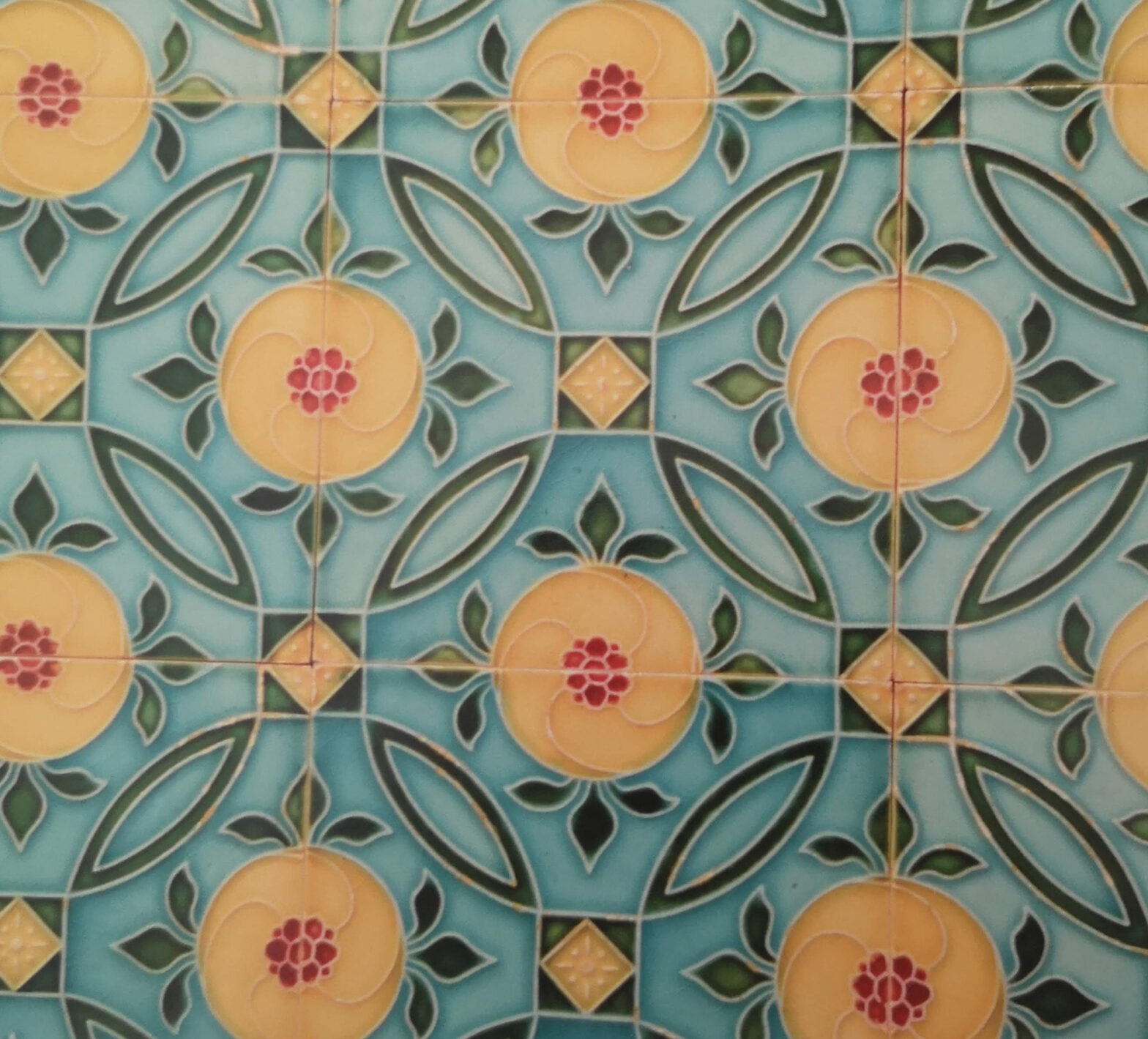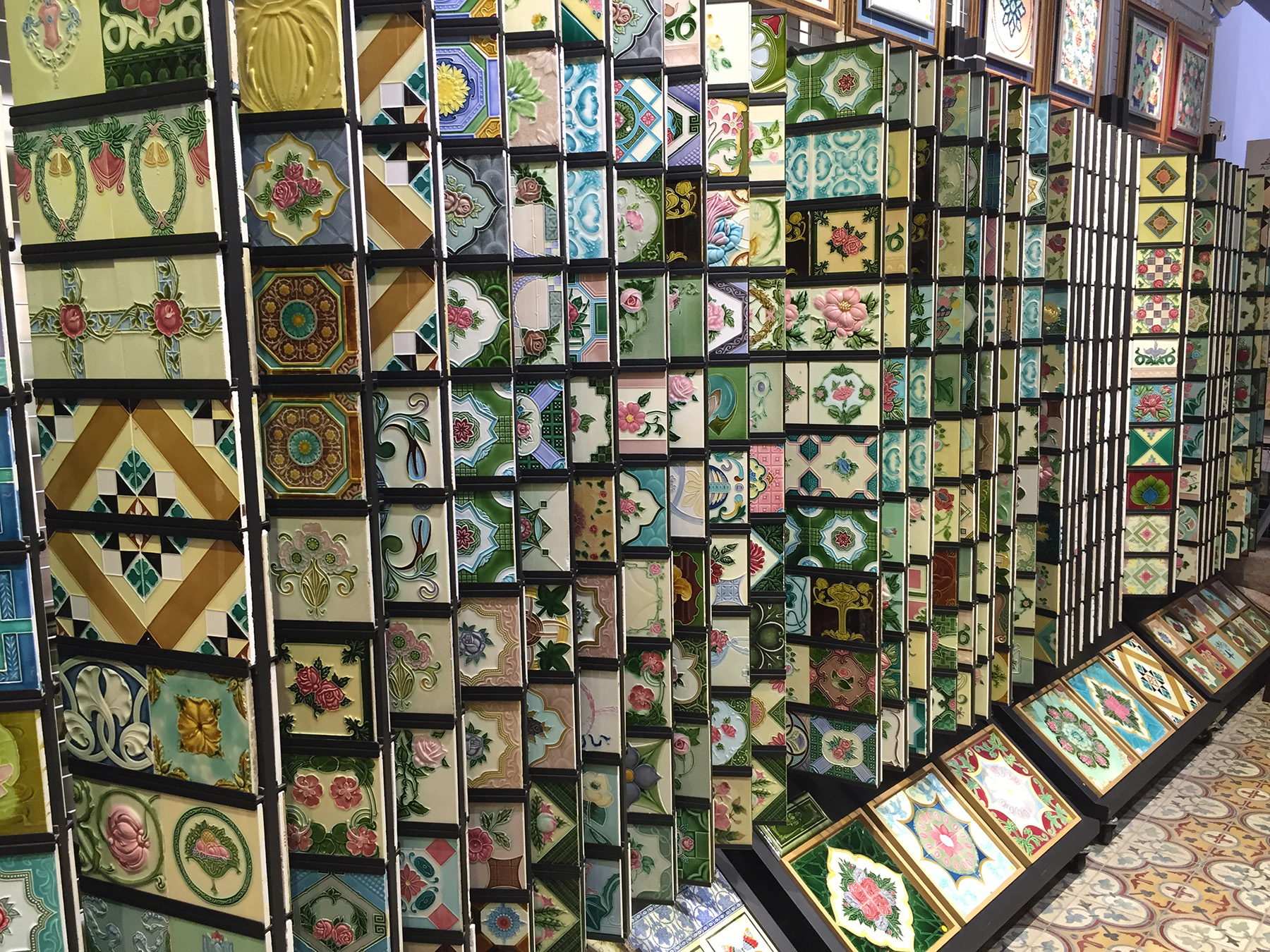Written by Baba Victor Lim
Baba Victor Lim reflects on his collection of decorative Peranakan tiles with Baba Colin Chee
In Southeast Asia, colourful ceramic tiles were popular in the British Straits Settlements of Malacca, Penang and Singapore during the colonial era.
Singapore Peranakan tile catalogues of the late 19th century testify to the wealth of many decorative and figurative designs produced during Great Britain’s glorious Victorian era.

Many of these tiles are of Art Nouveau style, characterised by delicate, graceful and sinuous lines with richly coloured glazes. They were produced as standalone tiles or as vertical panels for use in entrance porches, hallways, washstands and courtyards. These tiles can still be admired in old houses in Emerald Hill, Ann Siang Hill, Joo Chiat Road, Blair Road, Neil Road and a few of the lorongs in Geylang today.
Victor Lim, 61, who owns tile company Aster by Kyra, says, “During the early 1900s, large quantities of Majolica tiles from Britain, Belgium and Germany were imported by Tan Soo Hock & Co., A. Clouet & Co., and Malcolm, Lyon & Co.”
These imports were halted at th outbreak of World War I in 1914. Fewer tiles were imported from Europe after the end of that war, whereas more tiles bearing patent numbers issued by the Japanese patent office were shipped to Singapore, owing to the shorter distance between Japan and Singapore. Many of these Japanese tiles produced in the 1910s and 1920s featured geometric patterns or auspicious Chinese designs depicting figurines, scripts, fruits, flowers, fish, birds and auspicious creatures.
In the late 1970s and 1980s, pre-war shophouses, terrace houses and bungalows were demolished to make way for new buildings and infrastructural developments. Many such tiles found in these old buildings ended up in dump heaps.

Passionate about Singapore history since young, Victor, then in his late 20s, painstakingly searched for such tiles at places where old buildings were being demolished – Jalan Besar, Geylang, Katong, Tanglin, River Valley, Killiney Road, Bishopsgate, Emerald Hill, among others. He then researched and preserved them for his own collection.
30 plus years on, heritage tiles are still Victor’s passion. A favourite pastime is to roam around Singapore looking for these tiles. He also has contractor friends who alert him to heritage shophouses and bungalows about to be torn down or renovated so that he can save the tiles.

Showing us a set of six tiles depicting flying birds that he salvaged from a house in Geylang, Victor says, “The owner removed these decorative tiles from the external wall of his shophouse when he was renovating it and he threw them away. When the Urban Redevelopment Authority (URA) found out, it insisted the owner restore the tiles. He could not find them, so he employed a few Chinese craftsmen to paint and recreate the “tiles” on his external walls where they used to be.”
The fun of collecting lies not only in the visual aesthetics of the durable beautifully glazed tiles, but also in hunting down “lost” pieces that make up a tableau.
Victor proudly showed us a recently completed five-piece set of a peacock. “This five-piece tableau took me just over 20 years to complete. The first tiles I bought 20 years ago from a junk shop in Singapore. 10 years later, I found another one in an antique shop in Malacca. Then five years ago I acquired the fourth tile at a Joo Chiat junk shop. And just two weeks ago I saw and got the final piece in a Serangoon Road junk store. Some tiles form a picture and you may have to wait a long time to complete the tableau,” Victor says.
Part of the fun of collecting is also painstakingly restoring badly stained, uncared-for tiles to their original state. Victor puts dirty and chipped tiles through a tedious and strenuous eight-step cleaning process stretching over 12 weeks. What emerges from tubs of dirty water and other liquids are gems that look almost as good as when they were new some 100 years ago.
There are many tile collectors in Singapore. Most who are interested, however, buy them to decorate the walls of their homes or offices and shops. To them, it is the same as preserving a part of Singapore’s culture.
Photographs by Colin Chee and Victor Lim
This article was first published in Issue 3, 2013 under the title “Heritage on Your Walls”.





